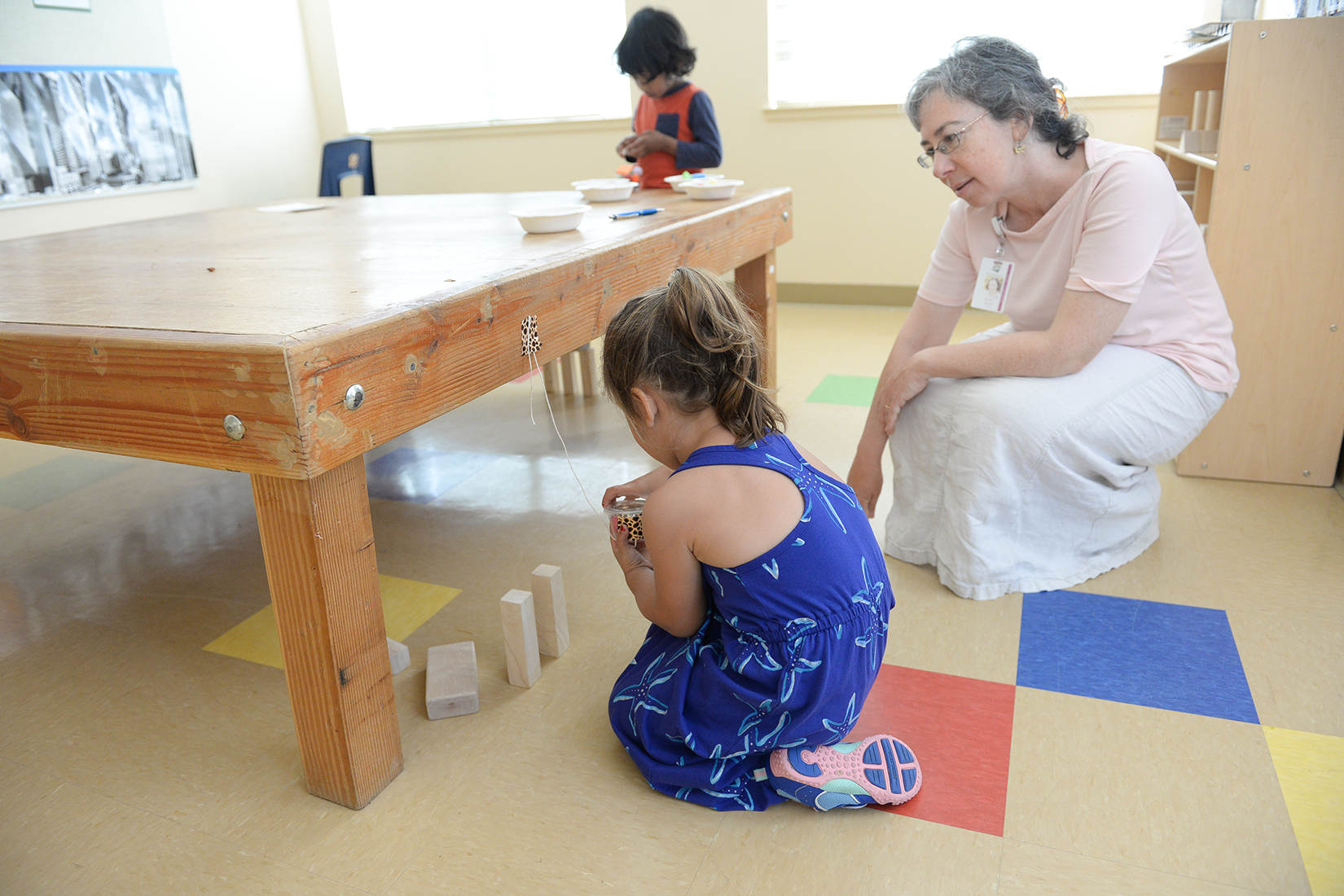Harker Preschool is piloting a new program, Wee Engineering, that will help preschool students break down problems in an understandable way. “Wee Engineer simplified the design thinking process into three hands-on segments of inquiry-based, experiential learning,” noted teacher Robyn Stone. First, students explore the materials, second they create to try an idea and third they try to improve it. The program was developed by the Museum of Science in Boston to help early childhood educators develop an understandable process for helping very young children understand engineering concepts.
The approach uses the Stanford University d.school design thinking process, which involves five steps: empathize with the person with a problem, define the problem, ideate potential ways to solve the problem, prototype with materials and test prototypes.
The preschoolers use puppets to help them understand these concepts. “By using a puppet to share a problem,” said Stone, “Wee Engineer has combined the first three design thinking steps. Students engage in dialogue directly with a puppet with whom they empathize, define her problem and ideate potential ways to solve it. Thus, during the investigation, the children spend the bulk of their time in material exploration and iteration – prototyping, testing and improving their prototypes.”
Stone was awarded the pilot program in early spring. “The most interesting part of the program for me, as an educator, is watching the discoveries children make about the properties of materials,” said Stone.
“For example, during the exploration of potential materials with which to make a wrecking ball, students were drawn to testing out brightly colored, fuzzy pom-poms. They were surprised when a wrecking ball full of pom-poms was not powerful enough to knock down a block structure.
“Some students systematically tested the materials by type, while others tested combinations of materials. There was a lot of discussion and collaboration between students as they soon discovered how a wrecking ball filled with heavier materials, such as erasers and marbles, was powerful enough to knock down block structures.
“Once they improved the wrecking ball, a few students creatively attempted to build larger and more complex block structures on which to test their powerful wrecking balls! As a group, the students drew conclusions and shared information with the puppet about what materials worked best.
“The children demonstrated tremendous interest in all segments of the investigation – dialoging with the puppet and exploring materials, creating prototypes and improving their prototypes,” Stone said.
Along with knowledge of how a wrecking ball works, “the students gained developmentally appropriate vocabulary with which to describe the engineering practices in which they engage every day – whether in the STEM Lab, in their home cottage or out in the play yard,” said Stone. “Also, the students gained a richer, deeper understanding of what it means to be an engineer.”
